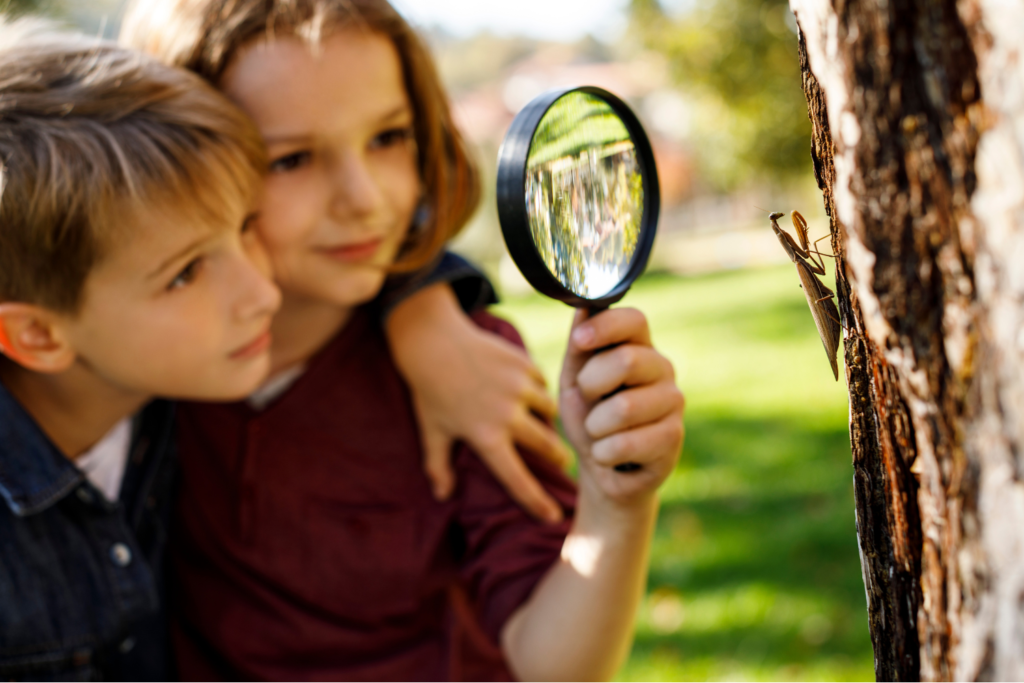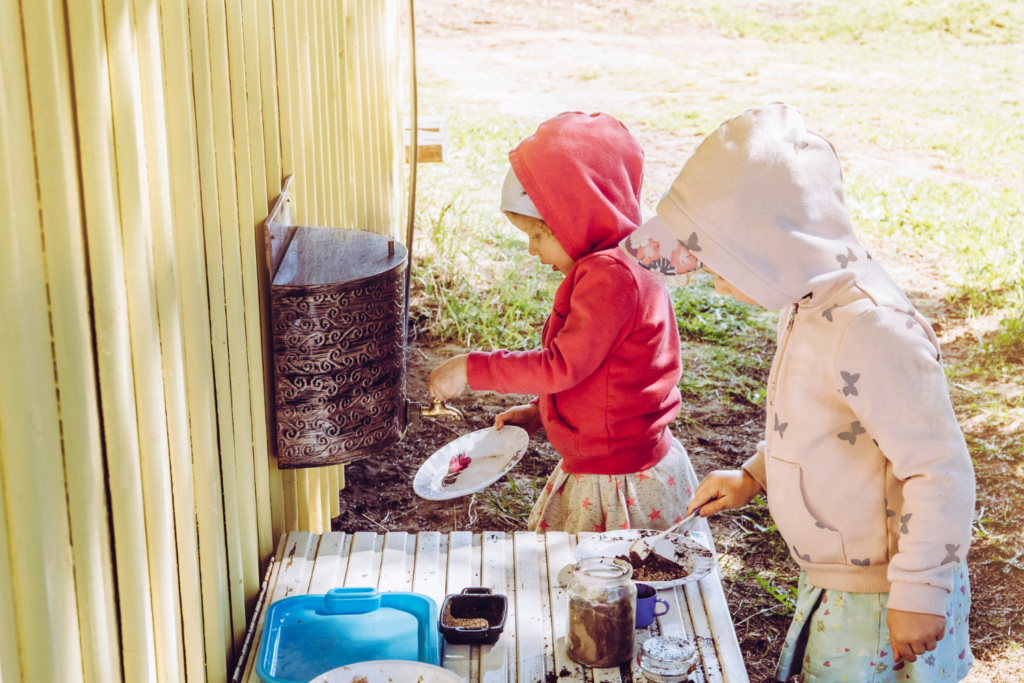As a mother of two and a teacher currently on maternity leave, I’ve embraced the opportunity to take our homeschooling adventures outdoors. The world around us is teeming with lessons waiting to be discovered, from the backyard to local parks and beyond. Outdoor homeschool activities offer a unique blend of education and exploration, fostering not just academic growth but a deep connection with the natural world. Through these experiences, I aim to instill in my children a love for learning that transcends traditional classroom walls, combining my professional knowledge with the joys of motherhood. Join us as we step outside, where every leaf, stone, and breeze brings a new discovery.
Table of Contents
Nature Walks: A Compact Guide to Outdoor Homeschool Activities
Nature walks are a simple yet profound way to enrich homeschool activities. These outings offer direct lessons in local flora and fauna, wrapped in the adventure of exploration. Here’s how you can make these walks both fun and educational:

Targeted Discovery: Pick a theme for each walk, like identifying three types of leaves or listening for various bird calls. It turns observation into a game, perfect for sparking curiosity in kids of all ages.
Sensory Exploration: Encourage kids to use their senses. Ask them to describe textures, sounds, and sights. This not only keeps younger children, like my nearly 4-year-old, engaged but also builds their descriptive language skills.
Scavenger Hunts: Create a list of items to find, making every outing an exciting quest. It’s a fantastic way to teach attention to detail and observation skills, engaging children in a playful learning experience.
Spotlight on Science: Use the opportunity to discuss natural cycles, from plant growth to animal habitats. It turns the walk into a living lesson, fostering a deeper understanding of the world.
By integrating these activities into your homeschool routine, you encourage not just learning, but a lifelong curiosity about nature. So grab those walking shoes and let the outdoor adventures begin!
Backyard Science Lab: Homeschool Activities Right Outside Your Door
Transform your backyard into a fascinating science lab with just a few simple setups. This is where homeschool activities meet hands-on science, allowing kids to explore the wonders of nature up close. Here’s how you can get started:

Plant Growth Observations: Plant a few seeds together and monitor their growth. Discuss the parts of a plant as they emerge, and maybe even chart their growth week by week. It’s a great way to introduce concepts of botany and the life cycle of plants.
Ant Observation Station: Find an ant trail and set up a small feeding station (a bit of sugar or honey will do). Watch how ants communicate and work together to collect food, teaching lessons in insect behavior and social structures.
Ecosystem in a Jar: Create a mini-ecosystem by layering soil, rocks, and plants in a clear jar. Add some water and seal it up to observe evaporation, condensation, and precipitation in a self-sustaining cycle. It’s a microcosm of the water cycle and plant respiration.
Weather Station: Set up a homemade weather station with a rain gauge, a wind vane, and a thermometer. Track the weather changes with your kids and discuss how weather affects the living things in your backyard.
These activities don’t just educate; they inspire curiosity and a deeper understanding of the natural world. Plus, they’re perfect for getting your hands dirty with practical science, making learning both fun and memorable. So, step outside and see what discoveries await in your very own backyard science lab!
Historical Site Visits: Bringing the Past to Life with Homeschool Activities
Exploring historical sites isn’t just about seeing old buildings or landmarks; it’s an immersive way to dive into the stories that shaped our world. These visits can turn into unforgettable homeschool activities, offering hands-on history lessons that books can’t match. Here’s how to make the most of these excursions:
Pre-Visit Storytime: Before visiting, spend some time together learning about the site. Whether it’s a local historical landmark or a museum, reading stories or watching documentaries about it can make the actual visit more engaging. This blends your teaching skills and parenting role, as you build excitement and context for what they’re about to see.
Scavenger Hunts: Create a scavenger hunt based on the site’s history. This could involve finding specific symbols, architectural features, or learning about the people who lived or worked there. It’s a fun way to encourage observation and attention to detail.
Role-Playing: Encourage kids to dress up as historical figures associated with the site or imagine themselves in a day in the life of someone from that era. This role-playing aspect can deepen their connection to the historical events and figures they’re learning about.
Sketching and Journaling: Bring along sketchbooks or journals and ask your kids to draw something they find interesting during the visit or write about their experience. This not only helps in reinforcing their learning but also allows them to express what they’ve found most impactful.
Visiting historical sites offers a unique blend of education and exploration, making history come alive in ways that resonate with young learners. So, grab your adventurers and step back in time with an educational journey they won’t soon forget!
Outdoor Art Projects: Unleashing Creativity with Nature as Your Canvas
Art doesn’t have to be confined to paper and pencils, especially when the great outdoors offers an abundance of materials and inspiration. Integrating art projects into your homeschool activities can be a fantastic way to encourage creativity and connect with nature. Here are a few ideas to get your little artists started:
Nature Collages: Collect leaves, twigs, flowers, and anything else that captures your child’s fancy during a nature walk. Back home, arrange your findings on paper or cardboard to create nature collages. This activity not only sparks creativity but also teaches about the variety of textures and colors found in nature.
Land Art: Inspired by artists like Andy Goldsworthy, land art involves creating sculptures or patterns using natural materials like stones, leaves, and branches. Find a spot in your backyard or a park and challenge your kids to create something using only what’s around them. It’s a great way to appreciate the transient beauty of natural art.
Leaf Painting and Printing: Paint directly onto leaves, using them as stamps on paper or fabric. Experiment with different colors and shapes to create a vibrant tapestry of leaf prints. This teaches kids about the structures of leaves and can lead into a mini-lesson on plant biology.
Rock Painting: Collect smooth rocks and paint them with designs, patterns, or even messages. These can decorate your garden, mark plant names, or just be fun keepsakes. This project can blend art with lessons on geology, discussing the types of rocks you find.
Shadow Drawing: On a sunny day, place toys or natural objects like plants in the sunlight and trace their shadows on paper. This simple activity not only engages artistic skills but also introduces concepts of light and shadow, sparking curiosity about how light behaves.
Incorporating art into your homeschool activities outdoors encourages children to see the world around them with fresh, imaginative eyes. Through these projects, they learn not just about art, but about the intricate details of nature that surround them. So, step outside and let nature’s beauty inspire your next artistic adventure!
Physical Education Outdoors: Family-Fun Homeschool Activities
Physical activity is not just a break from learning; it’s a crucial part of education that fosters health, happiness, and holistic development. When it comes to homeschool activities, taking physical education outside can turn exercise into an adventure. Here’s how to get moving and learning in the great outdoors:
Family Obstacle Course: Set up a simple obstacle course in your backyard or a local park. Use things like ropes for skipping, cones for weaving, or blankets for crawling under. It’s a fantastic way to develop motor skills and can be easily adapted for little ones, ensuring everyone gets to join in the fun.
Nature Hikes: Take the classroom to the trails with educational nature hikes. For younger children, focus on short, manageable trails and turn the hike into a nature scavenger hunt. This encourages observation skills and teaches about the local ecosystem, all while getting those little legs moving.

Yoga in the Park: Bring your mats outdoors for a family yoga session in the park. Yoga can be a gentle way for kids to engage in physical activity, promoting flexibility, balance, and a sense of calm. Plus, practicing yoga poses can be a playful way to connect with nature—think tree poses among the trees!
Garden Sports Day: Host a mini sports day with activities like sack races, three-legged races, or a soft ball toss. It’s not only about competition but also about learning to move in different ways, understanding teamwork, and, most importantly, enjoying physical activity as a family.
These activities not only keep everyone active but also reinforce the importance of a healthy lifestyle, teamwork, and perseverance. By integrating physical education into your homeschool curriculum through outdoor activities, you’re not just teaching your kids how to stay active; you’re showing them how to love movement and embrace the joy of exploring the outdoors together.
Environmental Stewardship: Homeschool Activities to Foster Love for the Planet
Teaching our kids to care for the Earth is one of the most valuable lessons we can share. Integrating environmental stewardship into homeschool activities not only educates them on important issues but also instills a sense of responsibility and connection to the natural world. Here are some practical, enjoyable ways to weave these lessons into your outdoor activities:
Community Cleanup Days: Organize a family or community cleanup day at a local park, beach, or neighborhood. It’s a hands-on way to teach children about the impact of litter on the environment and the importance of waste management. Plus, it’s rewarding to see the immediate difference your efforts can make.

Wildlife Conservation Projects: Participate in local wildlife conservation efforts, such as bird counting, planting native species, or building insect hotels. These activities can help kids understand biodiversity and the importance of ecosystems. They’ll learn that every creature has a role in the environment and how they can help protect it.
Planting a Family Garden: Starting a garden teaches children where their food comes from and the effort it takes to grow it. Discuss the role of bees and other pollinators, and consider planting a variety of flowers to attract them. This can be a lesson in patience, responsibility, and the cycle of life.
Recycling and Upcycling Projects: Use recycling as an opportunity to teach about resource conservation. Upcycling projects can turn “trash” into treasure, sparking creativity while emphasizing the importance of reducing waste.
Through these homeschool activities, children learn not just to enjoy the outdoors but to play an active role in protecting it. By teaching environmental stewardship, we’re helping raise the next generation of eco-conscious citizens, ready to take on the challenges of preserving our planet. So, let’s get outside and start making a difference—one family activity at a time!
Outdoor Learning: A Teacher-Mom’s Perspective on Homeschool Activities
Merging outdoor learning with our homeschool routine has been a journey filled with joy and a few challenges. Witnessing the wonder in my children’s eyes as they explore nature’s wonders right in our backyard or during our local park visits is priceless. The unpredictability of outdoor learning teaches us flexibility and the beauty of spontaneous discovery.
From nature walks that unveil the intricacies of our ecosystem, to hands-on science experiments under the sun, each activity enriches their understanding of the world. My hope is these experiences cultivate not only knowledge but a lifelong passion for learning and environmental stewardship.
As both a teacher and a mother, I treasure the balance between structured education and the free flow of learning outdoors. It’s in these moments of unscripted exploration that the most profound lessons emerge. I dream of my children carrying forward the curiosity and respect for nature they’ve developed through our homeschool activities, navigating the future with confidence and a deep-seated care for our planet.
You may also like:
25 MUST-TRY SPRING ACTIVITIES FOR ELEMENTARY KIDS: OUTDOOR FUN AND LEARNING
GAME-BASED LEARNING: 10 BEST EDUCATIONAL GAMES FOR HOMESCHOOLING




[…] HOMESCHOOL ACTIVITIES: OUTDOOR LEARNING ADVENTURES FOR YOUNG MINDS […]